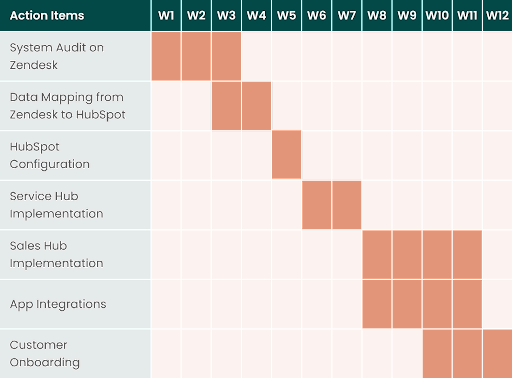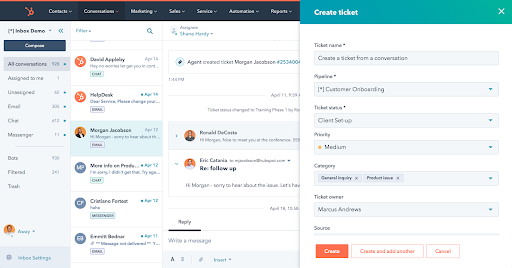
Platform Complexity

Chatbot Configuration Issues

Inefficient Ticket Management

SLA Limitations

Lack of Customer Visibility

Data Inconsistencies
Problem Overview
The client faced several challenges with their existing service management platform, impacting efficiency and customer satisfaction.
- The complexity of their existing platform, Zendesk, posed a steep learning curve for new employees, leading to decreased productivity during the onboarding phase.
- The client required an effective chatbot to handle basic queries. However, Zendesk's chatbot offered limited functionality, failing to process complex inquiries.
- Zendesk did not support automatic ticket assignment and escalation, causing delays in response time and diverting employee focus from other tasks.
- The strict SLA options in Zendesk did not cater to the client’s need for flexibility, hindering the establishment of a corporate SLA policy.
- Customers were unable to track the progress of their tickets, affecting customer satisfaction.
- Due to limited knowledge and challenges with Zendesk, the client struggled with data inconsistencies and record duplication.
The Tech Stack
| Old Stack | Updated Stack |
|---|---|
| Zendesk | HubSpot Service Hub |


Our Approach
Our approach involved understanding the client's unique requirements, identifying the limitations of their current system, and migrating them to HubSpot to optimize their processes.
- In-Depth Requirement Analysis: We began by conducting a thorough analysis of the client's specific needs. This involved engaging with different levels of their organization to gain a holistic understanding of their expectations and objectives.
- Systematic Assessment of Current Platform: We closely examined the existing platform (Zendesk) to pinpoint its shortcomings. This evaluation focused on areas such as user-friendliness, functionality, automation capabilities, and integration with other tools.
- Gap Identification: By comparing the client's requirements with the capabilities of their current system, we identified critical gaps. This included areas where the system failed to meet user needs, inefficiencies in processes, and limitations in terms of scalability and adaptability.
- Stakeholder Engagement: We regularly consulted with key stakeholders from the client’s team to ensure that our understanding of their problems was accurate and that our proposed solution would align with their business goals.
The Solution
We implemented several strategic changes and systems to address the client's needs:
- Data Migration and Cleansing: Migrated essential data from Zendesk to HubSpot after thorough cleansing and formatting.
After profiling the client, we went ahead with a strategic implementation plan for the client’s customer service requirements without disturbing any existing processes in place.
Here’s what the implementation schedule looked like:

- Ticketing Pipeline and Workflow Enhancement: Redesigned the ticketing pipeline to accurately reflect the client's process and implemented automated workflows for ticket escalation.

- Centralized Communication: Integrated various communication channels into HubSpot for streamlined service requests.

- Enhanced Functionalities: Assisted the client in transferring their knowledge base to HubSpot, launching a more functional chatbot, and configuring SLAs to meet their requirements.

Impact and Outcomes
39% decrease in time to first response
52% decrease in time to close a ticket
99% customer satisfaction rate
The solutions implemented led to significant improvements:
- Operational Efficiency: The automated pipeline and workflows enhanced team support and streamlined ticket management.
- Customization and Flexibility: The SLA configuration in HubSpot provided the needed flexibility, resulting in more accurate and useful data for process improvement.
- Enhanced Metrics and Reporting: The client observed a 39% decrease in time to first response and a 52% decrease in time to close a ticket, leading to a 99% customer satisfaction rate.
- Significant SLA Improvements: Only 2 tickets marked as overdue in SLA status post-implementation, compared to frequent 100+ SLA breaches with Zendesk.


